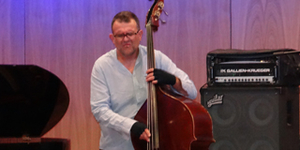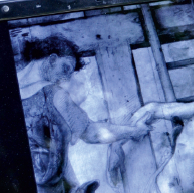
Doutoramento em Música e Musicologia
Double Bass and Electric Bass: The case study of John Patitucci
Massimo Cavalli

Orientação: Eduardo José Tavares Lopes
The electric bass and double bass are two different instruments sharing a common function: they link harmony with rhythm, especially when talking about jazz music. The capacity of a bassist to fully support an ensemble is something that can be achieved individually playing electric or double bass. However there are some bassists who, despite of the technical differences between these two instruments, choose to play both. Some of these performers are true masters using and switching electric and double bass according to the different musical settings. It is possible to define similarities and differences between the electric and double bass, but is it viable to use similar approaches too? In order to investigate this field, I focus my research on one exemplar player who combines all the qualities needed to both play electric than double bass: John Patitucci, an inspiration for bassists of all generations and a musician who synthesizes all the fundamental characteristics of an ideal bass player. This dissertation is inspired by Patitucci’s example and by the urge to fill a gap in the specialized literature concerning the history and application of different left and right hand techniques on the electric and double bass. The main purpose of this study is to create the backbone of a bass program for teaching both instruments using John Patitucci as example. His technical approach on both instruments and his soloing vocabulary are points of departure of this dissertation. I begin my study with the historical origins of Patitucci’s techniques ending with the development of exercises created in order to teach his techniques and vocabulary to those who aspire to play electric and double bass.
Keywords: John Patitucci, Double Bass, Electric Bass, Jazz




